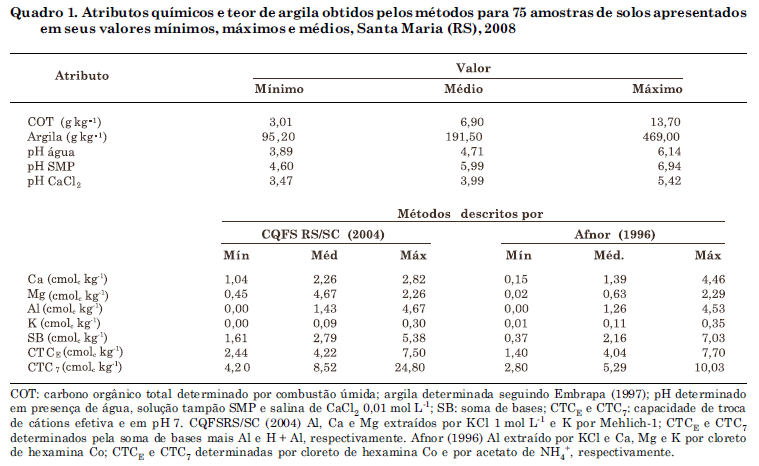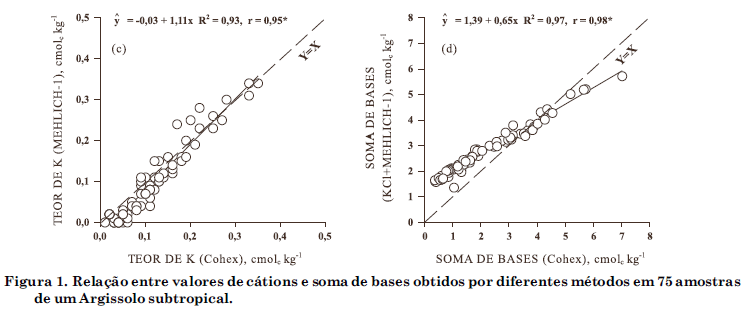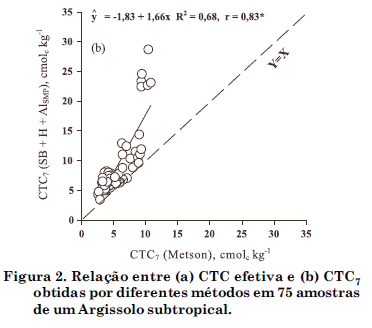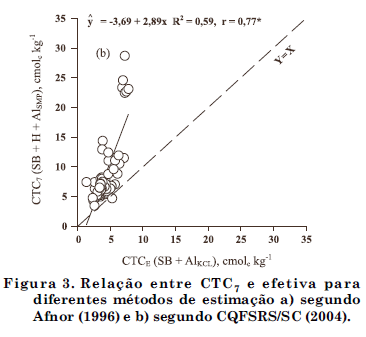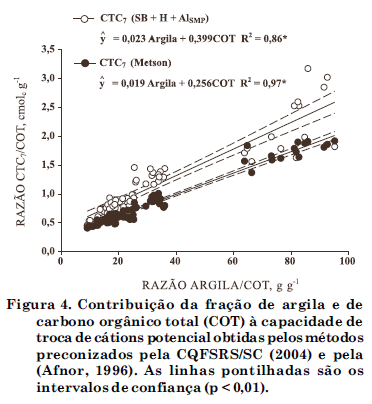The cation exchange capacity (CEC) is a physicochemical property dependent on mineral and organic soil constituents. Despite the use of different procedures and extractors the CEC is normally expressed considering only the pH control or not of the extracted solution. This study aims to discuss the significance of the contribution of organic carbon and clay to the CEC of an Acrisol, using different determination methods. For this purpose, 75 samples of an abruptic Red-Yellow Acrisol from the Universidade Federal de Santa Maria campus were used, representing five layers and five land use and management systems, in triplicate. The CEC E was estimated by cobalt hexamine trichloride (CEC E Cohex) and by the sum of cations Al3+ , Ca2+, Mg2+, and K+ (CEC E SB+AlKCl), the first three extracted by KCl and the last by Mehlich-1; the CEC7 was estimated by ammonium acetate (CEC7 Metson) and the sum of bases Ca2+ , Mg2+and K+ and H+Al was estimated by the SMP index (CEC7 SB+H+AlSMP). The CEC values obtained with the different methods are correlated, with coefficients of determination over 0.93. The CEC7 Metson values are subestimated when compared with those by CEC7 (SB+H+AlSMP). The contribution of clay and organic carbon to CEC7 was, respectively, 23 and 399 cmol c kg-1 for CEC7 (SB+H+AlSMP) and 19 and 256 cmol c kg-1 for CEC7 Metson. The contribution of the soil constituents depends on the extracting cation and the performance of the extraction methods employed.
clay minerals; organic matter; cobalt hexamine trichloride; ammonium acetate; pH

